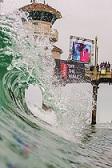
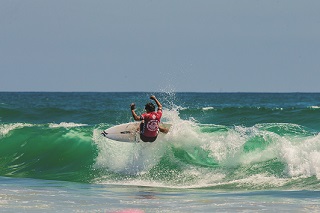
But a whole other world exists out of the pool and in open water environments. Just ask sports destination professionals in such natural locales as St. Petersburg/Clearwater, Florida, and Huntington Beach, California. But don’t overlook San Angelo, Texas; Rockford, Illinois, and the northwestern suburbs of Chicago; Oklahoma City and the wilds of central Pennsylvania. Oh, and just in case you still prefer to equate water sports with aquatics, a comprehensive natatorium in Midland, Texas, recently completed a massive expansion, making it one of the most comprehensive facilities in the country.
Drag Boat Racing that Lifts a Local Economy
Several years ago, Jenni Campbell knew nothing about drag boat racing. “Then I went to my first race and fell in love with it,” says the director of sales and servicing for the San Angelo Convention & Visitors Bureau.
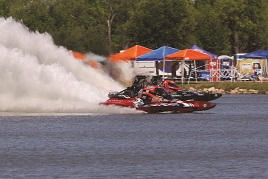
Boats are divided into 13 different classes, from personal watercraft to top-fuel racers that speed by at 260 miles per hour, and more than 1,000 racers compete for three days every June in front of as many as 15,000 spectators.
“We go in and build a city at the lake,” Campbell says, citing tremendous local support to pull off the event. “I love watching somebody attend for the first time. The roar of the boats literally shakes your insides, and you can feel the spray of their rooster tails after they go by.”
An Adventure Destination in Pennsylvania
Sometimes, it’s the natural landscape that turns a venue into a destination. Holy Komonczi loves her surroundings in central Pennsylvania, which include a competitive canoeing and kayaking environment along the western branch of the Susquehanna River.
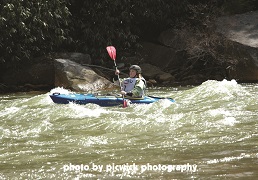
“It’s always been known as a great place to come and drop a kayak,” Komonczi adds. “There’s phenomenal scenery. It’s like you’re in a whole different world when you’re on the river.”
The annual West Branch of the Susquehanna River Wild Canoe/Kayak Race takes place every May beginning in Karthaus, Pennsylvania, and runs right through Clearfield County and is open to enthusiasts of all skill levels. And even though participants and spectators are surrounded by nature, they’re not far from 1,600 hotel rooms and several bed and breakfasts located along the river’s banks.
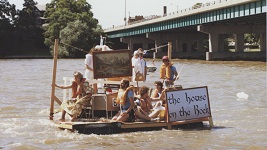
For the first time since 1998, the Rock River Anything That Floats Race returned by popular demand to Rockford, Illinois, in August. “This needed to come back,” says Andrea Mandala, marketing and communications manager for the Rockford Area Convention & Visitors Bureau. And crowds obviously agreed, since 20,000 showed up to watch.
Organizers of the event (which dates back to 1976) adhere strictly to the “anything that floats” premise. All rafts must be homemade, no commercially manufactured hulls are allowed, and crew sizes can be no larger than 10 people. Other than that, just about anything goes. Vintage photos from the 1990s show a crowded floating living room, a giant rubber duck and even replicas of Noah’s Ark and the Titanic. Canoes, kayaks and paddleboards also are allowed. Entry fees benefit local initiatives, including the annual Fourth of July fireworks show and holiday lighting efforts.
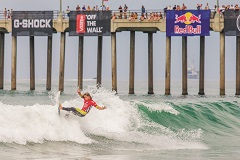
Wild Waves Welcoming Visitors (and Income) to Surf City USA
There’s an excellent reason why Huntington Beach, California, has trademarked its official second name of Surf City USA®. “Huntington Beach is known for its long 9.5-mile stretch of sandy beach, mild climate, excellent surfing and iconic California beach culture,” explains Susan Bryant Thomas, chief marketing officer of Visit Huntington Beach. “Swells generated predominantly from the North Pacific in winter and from a combination of Southern Hemisphere storms and hurricanes in the summer focus on Huntington Beach, creating consistent surf all year long, hence the name ‘Surf City USA.’ ”
Given all that, it’s tough to think of a better place to host the Vans US Open of Surfing than off the coast of this Southern California city. Acknowledged as the world’s largest surf competition and lifestyle festival, the nine-day event held every summer dates back to 1959 and has undergone multiple name changes — settling on the US Open of Surfing in 1994.
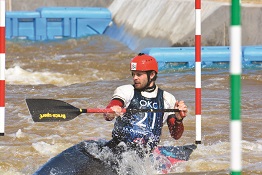
Huntington Beach hosts almost 50 surfing competitions every year. “[We have] the most consistent waves on the West Coast, which makes for year-round surfing,” Bryant Thomas says. “Because the best waves are often found at the crack of dawn, these events tend to take place early in the morning.”
Additionally, the city’s Annual Pier Swim — one of the top 50 open water swims in the United States, according to OpenWaterSwimming.com — requires a combination of strong swimming and bodysurfing capabilities in a race around the longest concrete pier in California.
In a Landlocked State, a New Whitewater Facility Opens with Olympic Trials
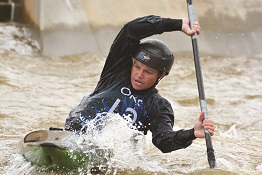 In May, the $45.2 million RIVERSPORTS Rapids whitewater rafting and kayaking center opened. Its first event? The USA Canoe/Kayak Olympic Trials for whitewater slalom. That same weekend, the facility also hosted the USRowing Central District Youth Championships, which brought in more than 1,500 high school athletes from nine states.
In May, the $45.2 million RIVERSPORTS Rapids whitewater rafting and kayaking center opened. Its first event? The USA Canoe/Kayak Olympic Trials for whitewater slalom. That same weekend, the facility also hosted the USRowing Central District Youth Championships, which brought in more than 1,500 high school athletes from nine states.
“They opened with a bang, that’s for sure,” says Sue Hollenbeck, director of sports business for the Oklahoma City Convention and Visitors Bureau. “The venue worked beautifully and has been perfect ever since. We’ve had people come from all over the world and say it mimics the natural environment really well. The really neat thing about this is that it is completely contained. It’s not a natural body of water, so the water is treated and pure.”
Designed for whitewater rafting and kayaking at all levels, RIVERSPORT Rapids is located at the crossroads of the United States at the intersection of Interstates 35 and 40 in the Boathouse District on the Oklahoma River. Although used primarily for recreational kayaking, rafting and tubing, the center also will host more competitions.
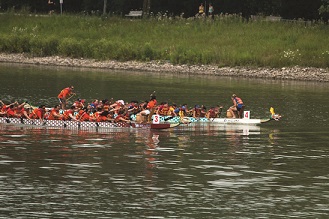
RIVERSPORTS Rapids is part of Oklahoma City’s MAPS 3 program, the third phase of the Metropolitan Area Projects capital improvements program funded by a one-cent, limited-term sales tax used to pay for the construction or renovation of debt-free projects designed to improve quality of life for the city’s residents and visitors.
When a Midwest Suburb Keeps an Ancient Chinese Tradition Alive and Well
The Chicago International Dragon Boat Festival returned to Arlington Heights, Illinois, for its fifth year in July. The festival hosts 40 dragon boat teams from the Midwest and is organized by GWN Dragon Boat, North America’s largest full-service dragon boat event production company.

The culture and spirit of dragon boat racing dates back 2,500 years to ancient China, and large teams of boat crews keep the tradition alive. Additionally, an Asian Cultural Village features multi-cultural performances, musical acts, workshops and demonstrations, and proceeds benefit Adaptive Adventures, which serves wounded and injured veterans by providing outdoor sports opportunities — including dragon boat racing.
Top-Ranked Beaches Bringing in a Variety of Sports Events
As the only beach in the United States to make TripAdvisor’s list of top 25 in the world, Clearwater Beach in Florida boasts white sand and, well, clear water — making it an ideal competitive playground. And nearby St. Pete Beach, voted TripAdvisor’s No. 4 beach in the United States this year, includes a long undeveloped stretch of public beach.
“We have one of the best venues in the world for aquatic events because of the variety we can offer,” says Chris Harper, sports marketing specialist for the St. Petersburg Clearwater Sports Commission.
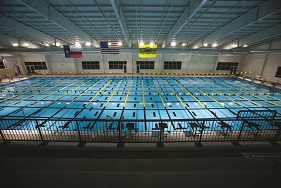
In addition to hosting various classes of U.S. Olympic Trials for sailing, the region will welcome the Kona Windsurfing Gulf Coast Championship in October and, for the first time, United States Sailing Association’s U.S. Disabled Championship in November.
Everybody into the Pool in the Southwest
What began as a 25-yard competition pool for the City of Midland Swim Team in 1972 has become a full-service aquatics facility that caters to both local athletes and the nation’s elite swimmers. Now known as COM Aquatics, the center has undergone numerous renovations and expansions and helped train swimmers who went on to compete at the Junior National and Senior National levels, as well as in the Olympic Trials.
The latest expansion of COM Aquatics is the FMH Foundation Natatorium, which opened in April with a 50-meter long course pool and includes a second 25-yard pool and a large courtyard designed to serve as a gathering space for swimmers and their teams, according to Stephanie Martin, director of sales for Visit Midland.
“COM is now one of the most comprehensive aquatic centers in the country,” Martin says. "Seating capacity for spectators in the FMH Foundation Natatorium is approximately 700. For the Abell-Hangar Pool and competitive diving, spectator seating is approximately 750.”
The facility, which regularly hosts AAU events and West Texas LSC Short Course Championships, also boasts a diving facility with one- and three-meter springboards, and three-, five-, seven- and 10-meter platforms.
Whether you’re looking to promote traditional aquatics events or a more adventurous form of water sports, these destinations have the natural and manmade resources to help you succeed.

